Everyone knows what bridge grating looks like. It’s seemingly part of everything—from stairs to ladders to ramps to fire escapes to flooring. You know this: the stuff that comes in four-foot by eight-foot panels.
Grating is easy to clean (it doesn't get dirty, really), allows light to permeate a space easily, makes a fantastic drain cover, and weighs relatively little for its strength. It's a pretty basic and essential part of construction.

What most people don't consider, though, is its composition. Not all gratings are made of the usual, default-mode steel. Like all matters involving construction, there are very specific trade-offs that need to be made in choosing your material.
Yes, steel gratings are easily the most common: strong, not too heavy, and not too expensive. There's a lot to be said for sticking to the old classics. You know what you're dealing with.
Aluminum is the next most-common material and is usually present in structures that need to minimize weight. These gratings tend to show up in ships and, on occasion, airplanes.
One of the less common materials for grating is fiberglass. (Actually, fiberglass is reinforced plastic, but let’s not get too picky.) Made through a pultrusion process, fiberglass-reinforced plastic grating (or FRP grating) is non-corrodible, unlike steel or aluminum gratings.
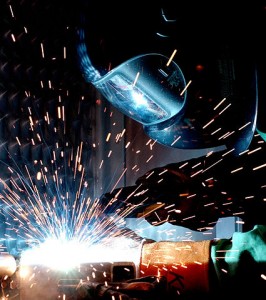 This makes the fiberglass type ideal for environments filled with corrosive chemicals or gases; chemical plants are one obvious setting for them, depending on the plant. Another is geothermal generating stations, which tend to have sulfur and other chemical deposits accumulating on everything.
This makes the fiberglass type ideal for environments filled with corrosive chemicals or gases; chemical plants are one obvious setting for them, depending on the plant. Another is geothermal generating stations, which tend to have sulfur and other chemical deposits accumulating on everything.
Material isn't everything, either. You need to choose the joints in the grating with care. Welded joints, the most popular, provide both strength and lightness and are good enough for most projects.
Also to consider: the size of the gaps in the grating. If your inventory features lots of small objects, it might make sense to use a heavier grate with much closer meshing. Tends to keep things from falling through.
(I need to invent a personal, portable grating system that I can use whenever I take my house keys and car keys somewhere. Maggie, of course, would just hand me the colander she uses to drain pasta.)
 One of my favorite movies from the last decade or two was that King Kong remake. The big ape himself is done pretty spectacularly by a fellow named Andy Serkis, using motion capture.
One of my favorite movies from the last decade or two was that King Kong remake. The big ape himself is done pretty spectacularly by a fellow named Andy Serkis, using motion capture.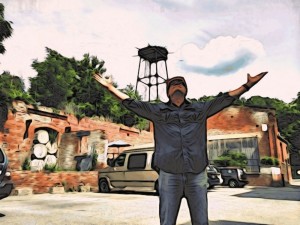 There are a lot more dots on the face, too; that part is harder to animate, so it needs a lot more detail. It still takes a ton of work. Movies are just crazy expensive for a good reason, and not just because of the huge paychecks the actors get. There is a ton of work and expense put into it.
There are a lot more dots on the face, too; that part is harder to animate, so it needs a lot more detail. It still takes a ton of work. Movies are just crazy expensive for a good reason, and not just because of the huge paychecks the actors get. There is a ton of work and expense put into it.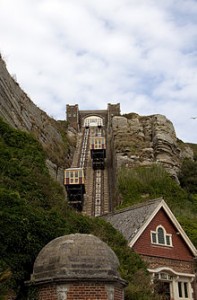 Unfortunately, it sometimes isn’t possible to construct a shallow ramp, usually due to terrain. You’ve still got to be able to get up to the top, though, which is where funiculars come into the picture.
Unfortunately, it sometimes isn’t possible to construct a shallow ramp, usually due to terrain. You’ve still got to be able to get up to the top, though, which is where funiculars come into the picture.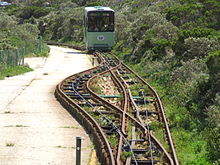 Depending on the amount of space available, the carts might have separate tracks, or they may share tracks. When they share track, there’s generally a split rail in the middle of the run that diverts the carts around each other.
Depending on the amount of space available, the carts might have separate tracks, or they may share tracks. When they share track, there’s generally a split rail in the middle of the run that diverts the carts around each other.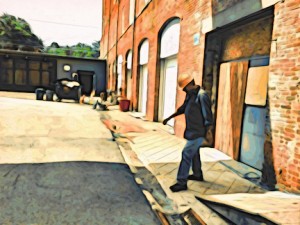 The first use was actually pre-medieval, though it was used on occasion in medieval times. Siege ramps are huge earthen ramps built right up a castle or city wall, a cliff face, or other positions of strength. They’re about as absurd as you’d think: the builders are going to come under constant attack by the people above, resulting in a wasteful loss of life. It was really only used when the besiegers grossly outnumbered the besieged, were otherwise unable to break through the enemy defenses, and had little care for loss of life on their side. The Romans used it a few times, as did a few of the smaller empires before them, and a few of the smaller kingdoms they conquered.
The first use was actually pre-medieval, though it was used on occasion in medieval times. Siege ramps are huge earthen ramps built right up a castle or city wall, a cliff face, or other positions of strength. They’re about as absurd as you’d think: the builders are going to come under constant attack by the people above, resulting in a wasteful loss of life. It was really only used when the besiegers grossly outnumbered the besieged, were otherwise unable to break through the enemy defenses, and had little care for loss of life on their side. The Romans used it a few times, as did a few of the smaller empires before them, and a few of the smaller kingdoms they conquered.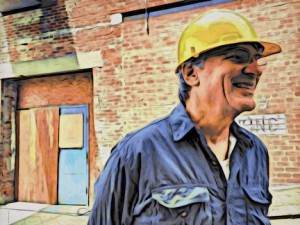 The other use was in siege towers. These, at least, were constructed with a bit more safety in mind for the troops on your side: not that sending them over an enemy castle wall is, particularly, a safer idea. Siege towers, depending on the whim of the builder, were generally a bizarre hybrid of ramp, staircase, ladder, and watchtower, all built out of wood and canvas and stuck on wheels to roll right up to the castle walls, where troops could exit the tower directly onto those walls.
The other use was in siege towers. These, at least, were constructed with a bit more safety in mind for the troops on your side: not that sending them over an enemy castle wall is, particularly, a safer idea. Siege towers, depending on the whim of the builder, were generally a bizarre hybrid of ramp, staircase, ladder, and watchtower, all built out of wood and canvas and stuck on wheels to roll right up to the castle walls, where troops could exit the tower directly onto those walls.